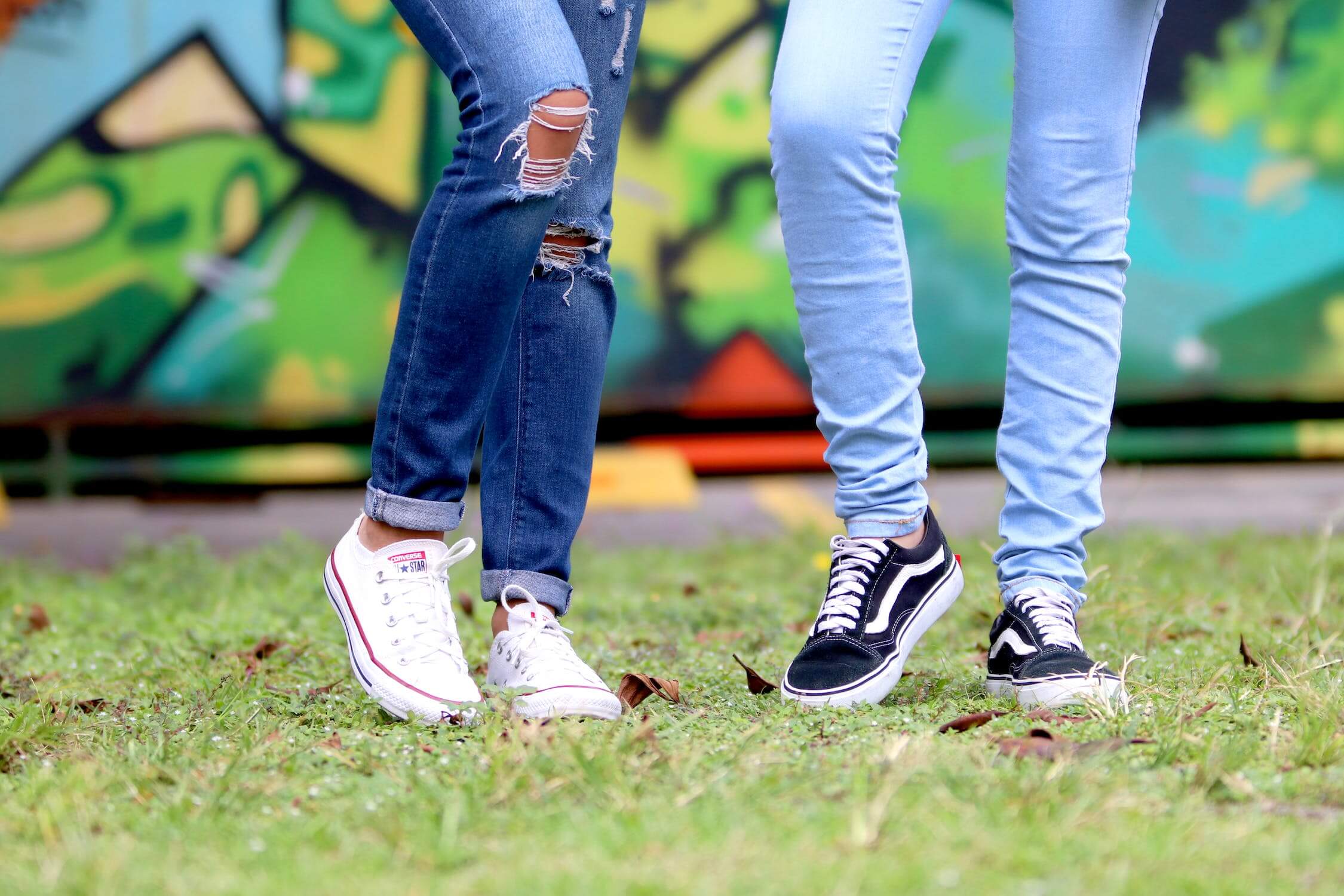How to Find the Right Pair of Jeans
Jeans are a wardrobe staple that has been around for over a century. They come in a variety of styles, cuts, and washes, which can make it difficult to find the perfect pair. In this blog post, we will provide you with a guide on how to find the right pair of jeans.
1. Know Your Body Type
One of the most important things to consider when looking for the perfect pair of jeans is your body type. Different styles of jeans suit different body types, so it’s important to know your body type before making a purchase. Some common body types include:
- Hourglass: Balanced proportions with a defined waistline and full hips and bust.
- Pear: Narrower shoulders and bust, wider hips and thighs.
- Apple: Rounder midsection with a less defined waistline.
- Athletic: Muscular build with broader shoulders and narrower hips.

2. Choose the Right Fit
Once you have identified your body type, you can start looking for the right fit. The fit of your jeans is crucial to how comfortable and flattering they will be. Some common fits include:
- Skinny: Tight-fitting through the leg with a tapered ankle.
- Straight: Straight leg from hip to ankle.
- Bootcut: Fitted through the thigh and flares out from the knee to the ankle.
- Flare: Fitted through the thigh and flares out from the knee to a wide ankle.
- Wide leg: Fitted through the hips and waist, with a wide leg from thigh to ankle.
3. Consider the Rise
The rise of your jeans refers to the distance between the crotch and the waistband. Different rises can flatter different body types, so it’s important to consider this when choosing your jeans. Some common risks include:
- High rise: Sits at or above the natural waistline.
- Mid-rise: Sits between the natural waistline and hips.
- Low-rise: Sits below the hips.
4. Pay Attention to the Fabric
The fabric of your jeans can greatly affect their fit and feel. Some common denim fabrics include:
- Stretch denim: Contains spandex or elastane for added stretch and comfort.
- Raw denim: Unwashed and untreated denim that can be stiff at first but molds to your body over time.
- Lightweight denim: Perfect for warmer weather, lightweight denim is thinner and more breathable.
- Selvage denim: A type of raw denim that is woven on old-fashioned shuttle looms, resulting in a tighter weave and more durable fabric.
5. Consider Wash
The wash of your jeans refers to the color and finish of the fabric. Some common washes include:
- Dark wash: A deep blue or black color that is versatile and can be dressed up or down.
- Light wash: A lighter blue or white color that is more casual.
- Acid wash: A vintage, faded look that can be achieved through bleaching and other treatments.
- Distressed wash: A worn-in, distressed look achieved through ripping, sanding, and other treatments.
6. Try Them On
The only way to know if a pair of jeans is right for you is to try them on. When trying on jeans, pay attention to the following:
- Comfort: Jeans should feel comfortable and move with your body.
- Length: The length of your jeans is important to consider. They should hit at the ankle or slightly above.
- Waistband: The waistband should fit snugly but not be too tight or too loose.
- Butt: The fit around your butt is important. Look for jeans that flatter your shape and don’t sag or bunch.
7. Take Care of Your Jeans
Once you have found the perfect pair of jeans, it’s important to take care of them to ensure they last as long as possible. Here are some tips for taking care of your jeans:
- Wash them inside out: This can help prevent fading and protect any embellishments on the jeans.
- Wash them sparingly: Jeans do not need to be washed after every wear. Try to go as long as possible without washing them to preserve the fabric and fit.
- Use a gentle detergent: Harsh detergents can damage the fabric of your jeans. Use a mild detergent and avoid using bleach or fabric softener.
- Hang them to dry: Avoid putting your jeans in the dryer, as this can shrink them and damage the fabric. Instead, hang them to dry.
- Store them properly: When storing your jeans, fold them neatly and avoid hanging them by the belt loops, as this can stretch out the fabric.
Finding the right pair of jeans can be a daunting task, but by considering your body type, choosing the right fit, paying attention to the fabric and wash, and trying them on, you can find a pair that flatters your figure and makes you feel confident. And by taking care of your jeans, you can ensure they last as long as possible and continue to be a wardrobe staple for years to come.
Subscribe to Newsletter





